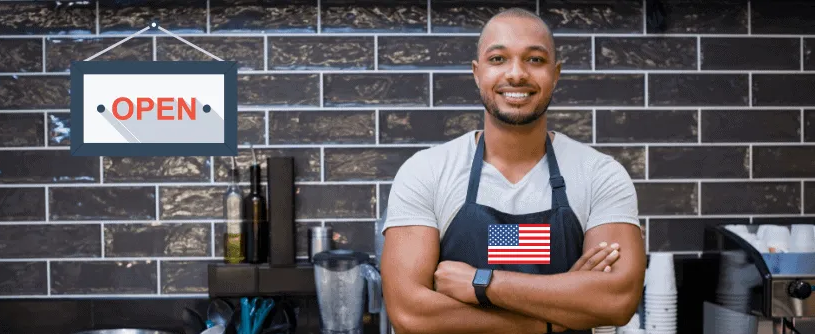Sri Lankan Americans: A Small but Exceptionally Educated and Thriving Community
While much attention is paid to larger immigrant groups in the United States, the Sri Lankan American community stands out as a highly educated, professionally accomplished, and civically engaged population — despite its relatively small size.
According to the U.S. Census Bureau and analysis by Pew Research Center, there were an estimated 61,000 Sri Lankan Americans in 2023. Though this places them among the smaller Asian origin groups in the U.S., their contributions — especially in education, healthcare, and technology — far exceed their numbers.
As someone working with first-generation entrepreneurs and professionals from across South Asia, I’ve had the privilege to observe the excellence and potential within the Sri Lankan diaspora. Here's an in-depth look at this community’s demographics, strengths, and opportunities for growth — compared to Asian Americans and the U.S. at large.
Population & Immigration
Estimated Population (2023): 61,000
68% are foreign-born, compared to:
- Asian Americans: 66%
- U.S. overall: 14%
Over 60% of Sri Lankan immigrants have lived in the U.S. for more than 10 years
A majority are now naturalized U.S. citizens
Takeaway: The Sri Lankan American population is well-established and relatively settled, with strong roots in U.S. society and institutions.
Geographic Concentration
Top states with Sri Lankan American populations:
- California
New York - Texas
- New Jersey
- Florida
Top metro areas:
- Los Angeles
- New York City
- San Francisco Bay Area
- Dallas-Fort Worth
Takeaway: Like many professional immigrant communities, Sri Lankans tend to cluster in diverse, opportunity-rich metro areas where healthcare, tech, and academia flourish.
Age & Generational Profile
Median Age: ~37 years
- vs. Asian Americans: 34.7
- vs. U.S. overall: 38.9
The community includes both long-term immigrants and a growing U.S.-born second generation
A high share of working-age professionals (25–54)
Takeaway: A mature, professional population well-positioned for leadership, mentorship, and generational business transition.
Language & English Proficiency
English Proficiency (ages 5+): ~85%
- vs. Asian Americans: 74%
- vs. U.S. overall: 91%
Home languages include:
- Sinhala
- Tamil
- English
Takeaway: English fluency is a strength — helping the community integrate into mainstream business, education, and civic life with relative ease.
Education
75% of Sri Lankan Americans age 25+ hold a bachelor’s or higher degree
- vs. Asian Americans: 56%
vs. U.S. overall: 38%
High representation in:
- STEM fields
- Healthcare
- Academia
- Engineering & IT
Takeaway: This is one of the most highly educated groups in the country — a strong foundation for leadership in medicine, research, entrepreneurship, and policy.
Income & Employment
Median Household Income (2023):
- Sri Lankan: $109,000
- vs. Asian Americans: $105,600
- vs. U.S. overall: $79,200
Median Personal Earnings (16+):
- Sri Lankan: $57,000
- vs. Asian Americans: $52,400
- vs. U.S. overall: $44,200
Poverty Rate:
Sri Lankan Americans: 5%
- vs. Asian Americans: 10%
- vs. U.S. overall: 11%
Takeaway: High education translates into high earnings and low poverty — a model example of immigrant upward mobility.
Business & Professional Success
Sri Lankan Americans are active in:
- Healthcare professions (especially physicians and nurses)
- University faculty and research
- Engineering and IT leadership roles
- Entrepreneurship in consulting, retail, and franchising
Small but growing interest in franchise investment, particularly among second-generation professionals seeking diversification
Takeaway: This community has the human capital and financial resources for greater ownership — especially in multi-unit franchising, professional services, and real estate portfolios.
Homeownership
Homeownership Rate: ~70%
- vs. Asian Americans: 62%
- vs. U.S. overall: 66%
Takeaway: Sri Lankan Americans outperform both Asian and national averages — a sign of stability, wealth-building, and long-term commitment to the U.S.
Family & Cultural Strength
Marriage Rate: ~66%
- vs. Asian Americans: 58%
- vs. U.S. overall: 48%
Community organizations, religious temples, and cultural festivals (especially Sinhala & Tamil New Year) play key roles in preserving identity
Takeaway: Family values and cultural cohesion remain vital — providing a strong foundation for the next generation.
Though smaller in number, Sri Lankan Americans represent one of the most accomplished, educated, and financially secure Asian origin groups in the U.S. With high English proficiency, strong household incomes, and a deep commitment to education, they are uniquely positioned for sustained upward mobility and business leadership.
As a consultant and advocate working to help immigrants build legacy businesses and wealth through franchising, I believe the Sri Lankan community is ripe for greater engagement in multi-unit ownership, real estate ventures, and succession planning. With the right access to capital and mentorship, their future impact can be far greater than their current visibility.
About the Author
Jack Tiwari is a seasoned business consultant, community leader, and cultural advocate. With a deep understanding of the franchise industry, he helps entrepreneurs achieve success in franchise sales and acquisitions, business development, and social impact. Contact Jack at jack@thefranchiseconsultingcompany.com.











